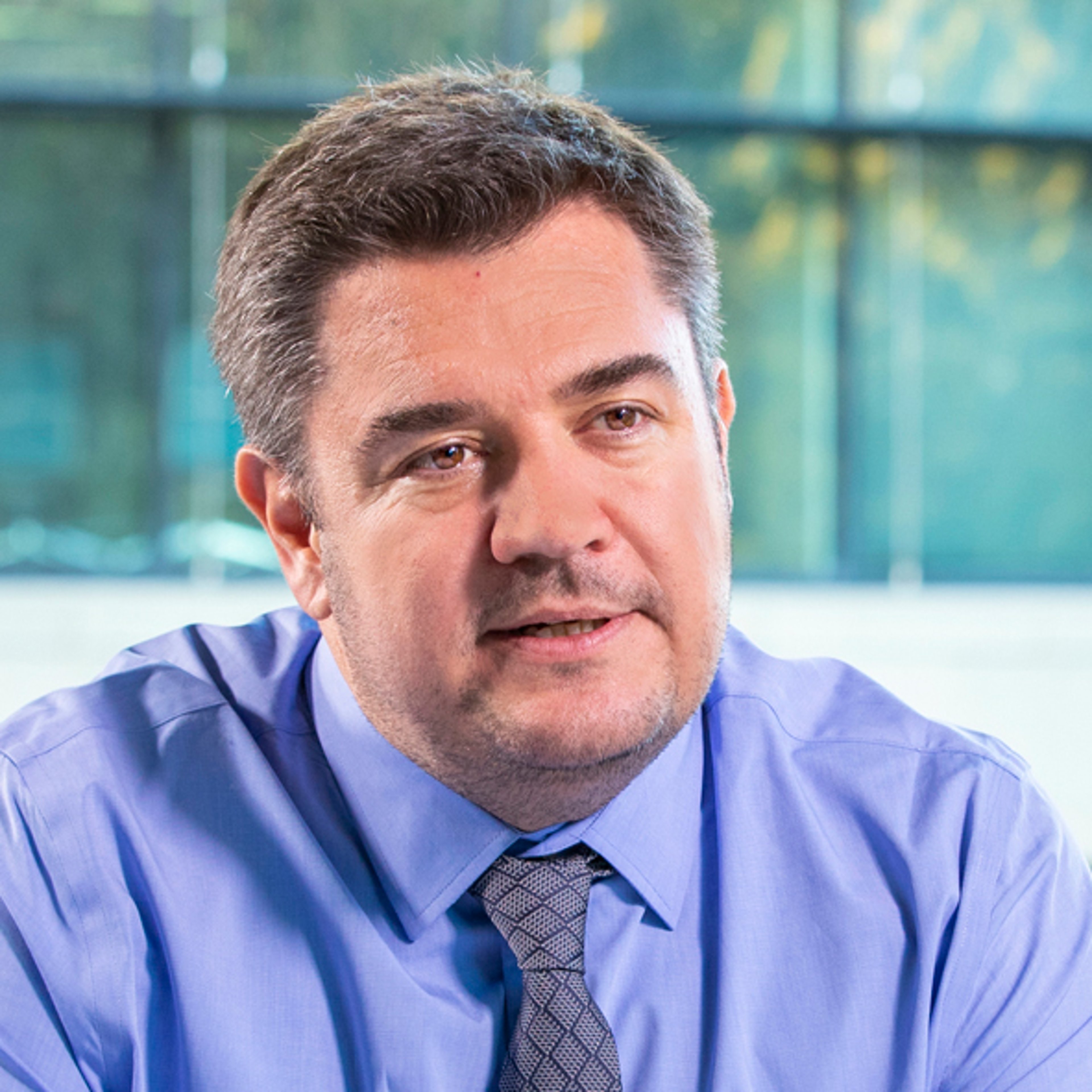
Imagine eating a steak that didn’t require slaughtering an animal. A real steak, not a plant-based alternative, and with the same delicious taste and texture as the classic farm-reared product.
The global meat market is a $1tn annual business. In 2016, the Food and Agriculture Organisation estimated that global demand would double by 2050, driven by population growth and greater spending power in developing economies. But with traditional farming come environmental and societal costs and challenges.
Meat cultivation – growing animal cells in vitro, meaning outside of a living organism – offers a solution. Industry frontrunners such as Upside Foods are on track to deliver consumer-ready products within a few years.
The advantages go beyond preventing the death of millions of animals. Cultivated meat could eliminate the rising risk of animal-borne diseases and antimicrobial resistance – which reduces the effectiveness of treatments for infections. It should also significantly reduce greenhouse gas emissions, as well as the use of land and water – all while saving on costs.
How does it work?
Cultivated meat is often referred to as being ‘lab-grown’. But it will not be grown in laboratories by the time you can buy it in a supermarket.
The technology involved can be compared with harvesting crops, hence the term ‘cultivated’. But rather than wheat, corn or soybeans, it is growing animal cells in bioreactors – steel vessels where raw materials are turned into a product via a chemical process. That can be applied to all types of meat, as well as seafood.
How is it made?
There are four key technological areas in the process:

Why do we need cultivated meat?
Modern meat production is driving the climate crisis. If the global livestock industry were its own country, it would be the world’s third-biggest greenhouse gas emitter, falling behind China and the US but before India.
These emissions relate to every step of the production process, with methane gas expelled by cows and sheep being a major cause.
That’s not to mention the associated drain on the earth’s vital natural resources. More than a quarter of our ‘fresh water footprint’ – the amount of safe and clean water used to produce consumer goods – goes towards the meat and dairy industries, which require an incredible amount to produce animal feed.
Livestock farming is also driving unprecedented levels of deforestation to make way for grazing and feed crops. That, inevitably, causes biodiversity loss.
We currently slaughter more than 70 billion animals annually – about 200 million every day. Do we even have space on the planet to double that by 2050? Using today’s farming techniques, it would require nearly twice the landmass of the US and Canada combined.
Perhaps more to the point, can we afford it? A Big Mac could cost as much as $11 without subsidies funded by consumer tax dollars. That’s about three times its current price, according to calculations by David Robinson Simon, author of Meatonomics.
In terms of caloric conversion, rearing animals is an incredibly inefficient mechanism to produce edible protein. So why spend the energy growing the complete animal, with its bones, vital organs and inedible parts, when we can grow only the parts we want to eat?
Winston Churchill recognised this problem in 1931, saying: “We shall escape the absurdity of growing a whole chicken in order to eat the breast or wing by growing these parts separately under a suitable medium […] The new foods from the outset will be practically indistinguishable from the natural products.”
Almost a century later, this solution is within reach.

5 facts about Upside Foods
- Upside Foods, formerly known as Memphis Meats, was the world’s only lab-grown meat company when it announced its intention to feed the world with cellular agriculture in 2015. It aspires to be one of the three or four companies globally that will capture the business opportunity early on.
- The company’s CEO and founder is Uma Valeti, a cardiologist and adjunct professor at Stanford University School of Medicine who also serves on the advisory council of the Good Food Institute.
- In the last seven years, the company has raised more than $600m dollars in funding. Its backers include the celebrity investors Richard Branson and Bill Gates, and Whole Foods CEO John Mackey. Multinational meatpackers Tyson Foods and Cargill are also involved.
- Upside Foods is already a frontrunner in moving cultivated meat from the research and development phase it has been in for the past decade into commercialisation phase. Last year it had two ground-breaking developments:
(a) moving away from Foetal Bovine Serum and dramatically reducing its input media cost
(b) opening (in Emeryville, California) its Engineering, Production and Innovation Centre, currently the leading and largest cultivated meat pilot production facility in the US at 53,000 sq ft. - The company is planning to open its first commercial facility in 2024 and start selling its products to restaurants and grocery stores later that year.
Though Upside Foods is a frontrunner in this emerging sector, it’s not the only player in the game.
We have also been impressed by innovators such as US-based Wildtype, which is cultivating sushi-grade salmon, and Israeli company Future Meat, which is focused on producing chicken, lamb and beef.
According to Wildtype, cell-cultivated seafood provides the same nutritional benefits without the mercury, microplastics, antibiotics and other contaminants commonly found in wild-caught and farmed fish. Its pilot plant in San Francisco became operational last year.
Both companies have raised considerable amounts of capital too.
Future Meat, which is currently operating in Rehovot, raised $347m in a funding round late last year and is now planning for a production ramp in the US. And since it was founded in 2016, Wildtype has raised more than $120m.
What are the challenges?
Taste is likely to be the biggest determining factor, followed by cost. So, the goal is to get cultivated meat products to consumers with the flavours and textures they are used to at an affordable price.
The size and speed of the scale-up will need to be huge and rapid if cultivated meat is to become mainstream within the next decade. Limits to bioreactor capacity and amino acids are among the issues that the food industry will have to address.
The bioreactors involved will need to be considerably larger than today’s models. And because cells grow slowly, if the volume of the bioreactor becomes too high there are potential contamination issues as it will be more difficult to maintain a sterile environment.
Besides, global production rates for both amino acids and other growth factors are currently far too low and are costly.
Marketing will also be important. An anti-scientific mindset lingers in food related-matters, undoubtedly related to past arguments about genetically-modified organisms (GMOs). Many consumers are likely to be uncomfortable with this new product, so the industry must find a way to make it attractive through labelling, endorsements and so on.
We can’t be sure people will want to eat cultivated meat until it hits the shelves. But considering how detached we are from conventional meat production – we buy beef and pork, not cow and pig – it is not unreasonable to suggest that with carefully crafted messaging, cultured meat could overcome this resistance.
Conveying the environmental benefits could be key too. But given that cultured meat is not yet commercially available, there’s uncertainty about the precise extent of its environmental benefits. Estimates range from roughly 15 per cent lower emissions compared to chicken, to 90 per cent lower emissions compared to beef.

Reasons for optimism
There are potential teething problems with cultivated meat – but not insurmountable ones. For example, we might not be able to forecast its climate-related benefits precisely, but we are sure it will use significantly less land and water than farming livestock.
Furthermore, because it will take place in a controlled environment it should be more predictable and efficient. Lack of bacteria in the bioreactors is another major benefit, which could double the shelf life of cultivated meat products, thus reducing waste.
Prominent cultivated meat and seafood companies, spearheaded by Upside Foods, are already speaking to regulators and consumer groups to tackle problems before they arise and share their vision.
As the challenge of sustainably feeding the world becomes ever more pressing, we expect further companies to embrace the endeavour of revolutionising the way we eat.
Risk Factors
The views expressed should not be considered as advice or a recommendation to buy, sell or hold a particular investment. They reflect opinion and should not be taken as statements of fact nor should any reliance be placed on them when making investment decisions.
This communication was produced and approved in August 2022 and has not been updated subsequently. It represents views held at the time of writing and may not reflect current thinking.
Potential for Profit and Loss
All investment strategies have the potential for profit and loss, your or your clients’ capital may be at risk. Past performance is not a guide to future returns.
This communication contains information on investments which does not constitute independent research. Accordingly, it is not subject to the protections afforded to independent research, but is classified as advertising under Art 68 of the Financial Services Act (‘FinSA’) and Baillie Gifford and its staff may have dealt in the investments concerned.
All information is sourced from Baillie Gifford & Co and is current unless otherwise stated.
The images used in this communication are for illustrative purposes only.
Important Information
Baillie Gifford & Co and Baillie Gifford & Co Limited are authorised and regulated by the Financial Conduct Authority (FCA). Baillie Gifford & Co Limited is an Authorised Corporate Director of OEICs.
Baillie Gifford Overseas Limited provides investment management and advisory services to non-UK Professional/Institutional clients only. Baillie Gifford Overseas Limited is wholly owned by Baillie Gifford & Co. Baillie Gifford & Co and Baillie Gifford Overseas Limited are authorised and regulated by the FCA in the UK.
Persons resident or domiciled outside the UK should consult with their professional advisers as to whether they require any governmental or other consents in order to enable them to invest, and with their tax advisers for advice relevant to their own particular circumstances.
Financial Intermediaries
This communication is suitable for use of financial intermediaries. Financial intermediaries are solely responsible for any further distribution and Baillie Gifford takes no responsibility for the reliance on this document by any other person who did not receive this document directly from Baillie Gifford.
Europe
Baillie Gifford Investment Management (Europe) Limited provides investment management and advisory services to European (excluding UK) clients. It was incorporated in Ireland in May 2018. Baillie Gifford Investment Management (Europe) Limited is authorised by the Central Bank of Ireland as an AIFM under the AIFM Regulations and as a UCITS management company under the UCITS Regulation. Baillie Gifford Investment Management (Europe) Limited is also authorised in accordance with Regulation 7 of the AIFM Regulations, to provide management of portfolios of investments, including Individual Portfolio Management (‘IPM’) and Non-Core Services. Baillie Gifford Investment Management (Europe) Limited has been appointed as UCITS management company to the following UCITS umbrella company; Baillie Gifford Worldwide Funds plc. Through passporting it has established Baillie Gifford Investment Management (Europe) Limited (Frankfurt Branch) to market its investment management and advisory services and distribute Baillie Gifford Worldwide Funds plc in Germany. Similarly, it has established Baillie Gifford Investment Management (Europe) Limited (Amsterdam Branch) to market its investment management and advisory services and distribute Baillie Gifford Worldwide Funds plc in The Netherlands. Baillie Gifford Investment Management (Europe) Limited also has a representative office in Zurich, Switzerland pursuant to Art. 58 of the Federal Act on Financial Institutions (“FinIA”). The representative office is authorised by the Swiss Financial Market Supervisory Authority (FINMA). The representative office does not constitute a branch and therefore does not have authority to commit Baillie Gifford Investment Management (Europe) Limited. Baillie Gifford Investment Management (Europe) Limited is a wholly owned subsidiary of Baillie Gifford Overseas Limited, which is wholly owned by Baillie Gifford & Co. Baillie Gifford Overseas Limited and Baillie Gifford & Co are authorised and regulated in the UK by the Financial Conduct Authority.
China
Baillie Gifford Investment Management (Shanghai) Limited 柏基投资管理(上海)有限公司(‘BGIMS’) is wholly owned by Baillie Gifford Overseas Limited and may provide investment research to the Baillie Gifford Group pursuant to applicable laws. BGIMS is incorporated in Shanghai in the People’s Republic of China (‘PRC’) as a wholly foreign-owned limited liability company with a unified social credit code of 91310000MA1FL6KQ30. BGIMS is a registered Private Fund Manager with the Asset Management Association of China (‘AMAC’) and manages private security investment fund in the PRC, with a registration code of P1071226.
Baillie Gifford Overseas Investment Fund Management (Shanghai) Limited
柏基海外投资基金管理(上海)有限公司(‘BGQS’) is a wholly owned subsidiary of BGIMS incorporated in Shanghai as a limited liability company with its unified social credit code of 91310000MA1FL7JFXQ. BGQS is a registered Private Fund Manager with AMAC with a registration code of P1071708. BGQS has been approved by Shanghai Municipal Financial Regulatory Bureau for the Qualified Domestic Limited Partners (QDLP) Pilot Program, under which it may raise funds from PRC investors for making overseas investments.
Hong Kong
Baillie Gifford Asia (Hong Kong) Limited 柏基亞洲(香港)有限公司 is wholly owned by Baillie Gifford Overseas Limited and holds a Type 1 and a Type 2 license from the Securities & Futures Commission of Hong Kong to market and distribute Baillie Gifford’s range of collective investment schemes to professional investors in Hong Kong. Baillie Gifford Asia (Hong Kong) Limited 柏基亞洲(香港)有限公司 can be contacted at Suites 2713-2715, Two International Finance Centre, 8 Finance Street, Central, Hong Kong. Telephone +852 3756 5700.
South Korea
Baillie Gifford Overseas Limited is licensed with the Financial Services Commission in South Korea as a cross border Discretionary Investment Manager and Non-discretionary Investment Adviser.
Japan
Mitsubishi UFJ Baillie Gifford Asset Management Limited (‘MUBGAM’) is a joint venture company between Mitsubishi UFJ Trust & Banking Corporation and Baillie Gifford Overseas Limited. MUBGAM is authorised and regulated by the Financial Conduct Authority.
Australia
Baillie Gifford Overseas Limited (ARBN 118 567 178) is registered as a foreign company under the Corporations Act 2001 (Cth) and holds Foreign Australian Financial Services Licence No 528911. This material is provided to you on the basis that you are a “wholesale client” within the meaning of section 761G of the Corporations Act 2001 (Cth) (“Corporations Act”). Please advise Baillie Gifford Overseas Limited immediately if you are not a wholesale client. In no circumstances may this material be made available to a “retail client” within the meaning of section 761G of the Corporations Act.
This material contains general information only. It does not take into account any person’s objectives, financial situation or needs.
South Africa
Baillie Gifford Overseas Limited is registered as a Foreign Financial Services Provider with the Financial Sector Conduct Authority in South Africa.
North America
Baillie Gifford International LLC is wholly owned by Baillie Gifford Overseas Limited; it was formed in Delaware in 2005 and is registered with the SEC. It is the legal entity through which Baillie Gifford Overseas Limited provides client service and marketing functions in North America. Baillie Gifford Overseas Limited is registered with the SEC in the United States of America.
The Manager is not resident in Canada, its head office and principal place of business is in Edinburgh, Scotland. Baillie Gifford Overseas Limited is regulated in Canada as a portfolio manager and exempt market dealer with the Ontario Securities Commission ('OSC'). Its portfolio manager licence is currently passported into Alberta, Quebec, Saskatchewan, Manitoba and Newfoundland & Labrador whereas the exempt market dealer licence is passported across all Canadian provinces and territories. Baillie Gifford International LLC is regulated by the OSC as an exempt market and its licence is passported across all Canadian provinces and territories. Baillie Gifford Investment Management (Europe) Limited (‘BGE’) relies on the International Investment Fund Manager Exemption in the provinces of Ontario and Quebec.
Israel
Baillie Gifford Overseas is not licensed under Israel’s Regulation of Investment Advising, Investment Marketing and Portfolio Management Law, 5755-1995 (the Advice Law) and does not carry insurance pursuant to the Advice Law. This material is only intended for those categories of Israeli residents who are qualified clients listed on the First Addendum to the Advice Law.
Ref: 23471 10012435




